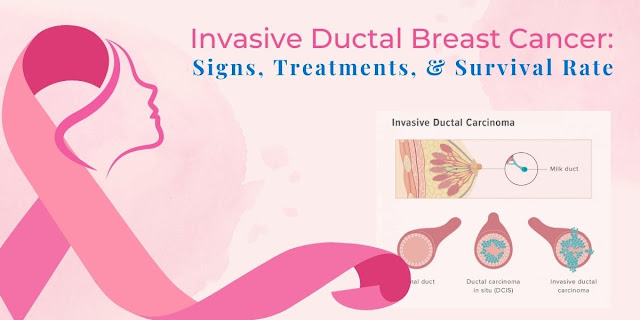WHAT ARE THE RISKS AND BENEFITS OF GENE THERAPY?
Humans are all unique with different skin textures and eye colors. These variations are caused by the fact that each person has different genes. All features we have are due to our genes. Genes are the "instruction manual" for our bodies, and they contain a chemical called DNA. Gene therapy has a huge impact on our health. Each unique gene has a DNA sequence that is "normal" for the type of gene. This is called a gene variant. They can sometimes pass from one parent to the next.
This is where gene therapy comes in. Gene therapy has many benefits that allow us to modify our DNA. This is where the goal is to restore normal DNA. This could mean replacing the defective gene with a healthy one. This could also mean that defective genes are made inactive. This would indicate that a new gene has entered the body to treat the health condition.
In 1990, the first study of gene therapy was completed. We still learn about the advantages of gene therapy for treating genetic disorders and medical conditions such as cancer, after more than three decades. A genetic disorder is a condition that results from abnormal DNA.
Gene therapy has become a well-known and widely studied topic. This blog will explain how gene therapy works, as well as discuss the risks and benefits. Our blog will provide more information about gene therapy.
What is Gene Therapy?
Gene therapy has many benefits. This treatment primarily treats genetic disorders as well as other medical conditions. They are also called "biologics" because they come from living organisms.
Gene therapy is a treatment that alters the behavior of genes within the body. Gene therapy has three benefits:
Removal of cells that cause disease: Unhealthy cells receive "instructions", a new set of DNA. It destroys old, sick cells.
Gene augmentation is the addition of a healthy copy of a gene to a cell that has a defective gene. This ensures that the healthy copy of the gene is able to counteract the harmful effects of the unhealthy one.
Inhibition of genes is the removal of genes that cause the disease.
Real-Life Cases of Gene Therapy
Let's look at Luxturna, a gene therapy type that treats genetic vision loss. Luxturna contains a healthy copy RPE65 which causes blindness following mutation. The healthy copy of RPE65 is injected into the eye and begins to act instead. This restores vision loss. This is an example of gene enhancement.
Now, we will check the Kymirah. The Kymirah is a process whereby a person takes T cells (a type of white blood cell) and changes them in a laboratory to give them a specific kind of protein. The protein chimeric antibody receptor (CAR), links to cancer cells on the surface and stops them from growing. This is one example of how to kill the cancer-causing cells.
Gene Therapy: Is it a safe treatment method?
Medical experts tested the first gene therapy using gene therapy impact factors and results. This was thirty years ago. Gene therapy is associated with severe health risks, including cancer and toxicity. Researchers and medical professionals later studied the mechanisms of gene therapy and created improved methods that are less likely to cause immune reactions. This allowed for greater benefits. There are risks associated with gene therapy, as these techniques are still new. However, many firms are working to make gene therapy research more efficient.
All gene therapy products in the United States are currently under control of the Food and Drug Administration. Federal laws prohibit people from participating in research studies or clinical trials. FDA approval is required for researchers who want to conduct a clinical trial.
The National Institutes of Health, (NIH), plays a crucial role in ensuring safety when gene therapy is used. After conducting gene therapy clinical trials, the NIH has laws that govern institutions.
Some gene therapies were approved after successful clinical trials. These include medicines that treat genetic disorders like Leber congenital atrophy and spinal muscular atrophy.
These laws make it possible to identify and prevent any potential health problems associated with gene therapy before the treatment becomes available to the public. The process isn't fully tested, and there are always side effects and toxicity.
Related:- IS IMMUNOTHERAPY EFECTIVE IN TREATING BRAIN CANCER
Researchers stressed the importance of sharing data during research into gene therapy. This is a new concept so there are risks. There is also the possibility of side effects that may occur late, which must be monitored for long periods. Data allows us to learn which treatments work and which ones don't.
Gene Therapy: Pros and cons
Gene therapy can make a huge difference in the lives of people suffering from rare genetic diseases like cancer. There are pros and cons to gene therapy, as with all treatments. Gene therapy is a risky treatment. Let's look at some of the risks and benefits associated with gene therapy.
Pros
Many options: Gene therapy can cure diseases that other treatments have failed to treat.
A single treatment is all that is available: Current gene therapies only offer a single treatment. Gene therapy is more promising that other treatments with multiple doses.
Long-term positive outcomes: Gene therapy can help patients get rid of their symptoms for life. Gene therapy can help many people improve their quality life.
Positive effects on the future: By removing faulty genes from parents, they will not pass them to their children.
Technology is constantly changing: As technology advanced, gene therapy became more popular. Gene therapy is improving as technology improves. We also hope gene therapy will soon be approved by the FDA.
Cons
Gene therapy is expensive: It costs more than other treatments, so it's not affordable for many. Gene therapy Zolgensma, which treats spinal muscular atrophy, is the most costly treatment in the U.S. The total cost of the treatment is approximately $2.1 million. This is way too expensive for most people.
Still in the Testing Phase: We are still evaluating gene therapy's potential benefits and drawbacks. There are no guarantees for gene therapy at this time. Experts in medicine are not sure how they will address the problem.
Potentially dangerous: There is concern that gene therapy could have other harmful effects than the cell it has been inserted into. It might also replace sex cells and parents could pass it on to their children.
Possible infection: Gene therapies can cause an infection if they use dead viruses to carry healthy genes into damaged cells. These viruses could also infect the patient receiving the treatment.
Gene Therapy: Is it a good option?
Gene therapies are not your first choice. You might be hesitant to use gene therapy if you have a medical condition that can be treated with FDA-approved gene therapy. It is often used before other medical treatments that don't work. In such cases, your healthcare provider can help you learn more about gene therapy. You can make an informed decision about whether gene therapy is a safe option.
Last words
Gene therapy allows us to modify our DNA with medical treatment. Gene therapy has many pros and cons. However, gene therapy can also be beneficial for those with rare genetic conditions like cancer. You should consider the pros and drawbacks of gene therapy and speak to your doctor about them. University Cancer Centers (UCCs) offer extensive gene therapy as well as other options such as surgery, radiation therapy, and endocrine treatment for cancer. To ensure complete recovery, they offer customized cancer treatment options that combine the benefits of gene therapy with other options. You can view the results of our patients to get a better idea of how we work. Book an appointment online to see the benefits of gene therapy.
Reference:-



Comments
Post a Comment